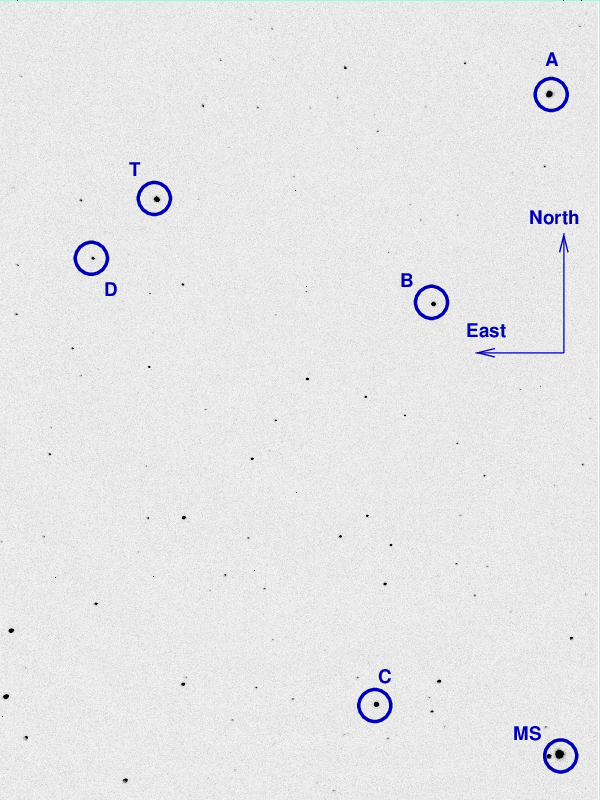
On the night of Sep 30/Oct 01, 2025, under good conditions, I acquired images of the recurrent nova T CrB. This star undergoes outbursts at long intervals of 80 years or so. Its next outburst is predicted to occur soon (but then again, it was also predicted to occur during 2024), and so I've joined the crowd who are monitoring it.
The star remains quiescent.
I managed to find the guider offset this evening! It's about 22 arcminutes West of the main camera's center.
This recurrent nova brightens by about 8 magnitudes (!), from V = 10 to about V = 2, around every 80 years. Will we see another outburst THIS summer?
These observations involved:
Notes from the night:
The picture below shows a cropped image of the field of T CrB from Jun 14/15, 2024. The field of view is about 20 arcminutes across.

I've marked the location of several comparison stars, with magnitudes and names taken from the AAVSO's table X40237AAS. Note that the magnitudes listed for stars "A" and "B" have changed from the ones I listed in last year's notes.
star name B V
------------------------------------------------------
A 000-BJS-901 11.096 10.554
B 000-BBW-805 11.779 11.166
C 000-BPC-198 13.049 12.336
--------------------------------------------------------------------------
When the target is centered, the finder TV shows this field:
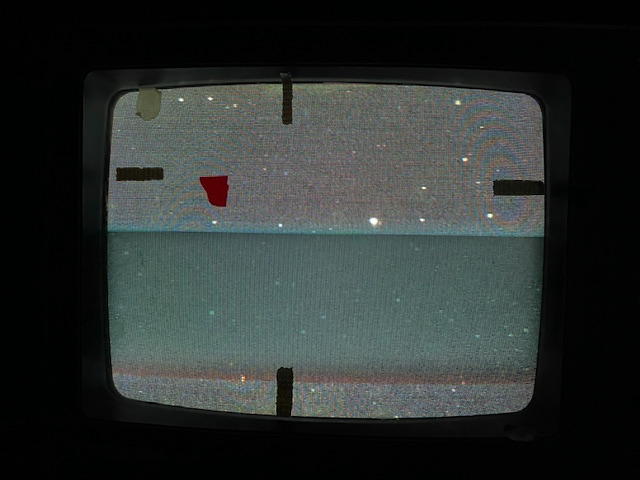
Here's the sky background over the course of the run. No clouds at all -- just clear skies.
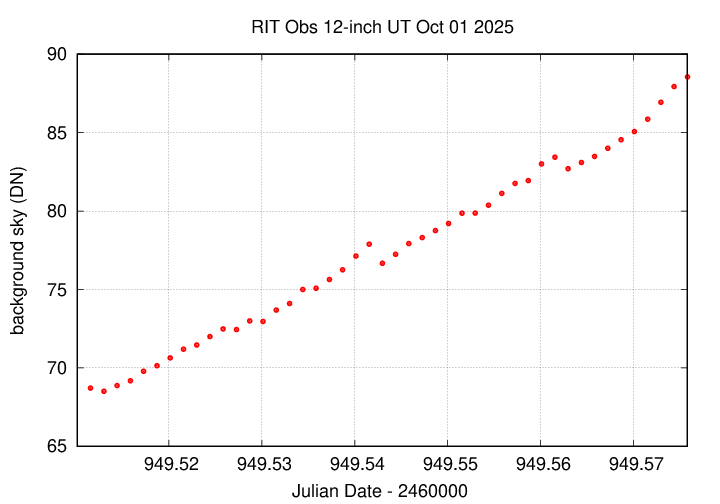
The FWHM rose towards the end of the run, probably due to airmass (which was 2.38 at the end).
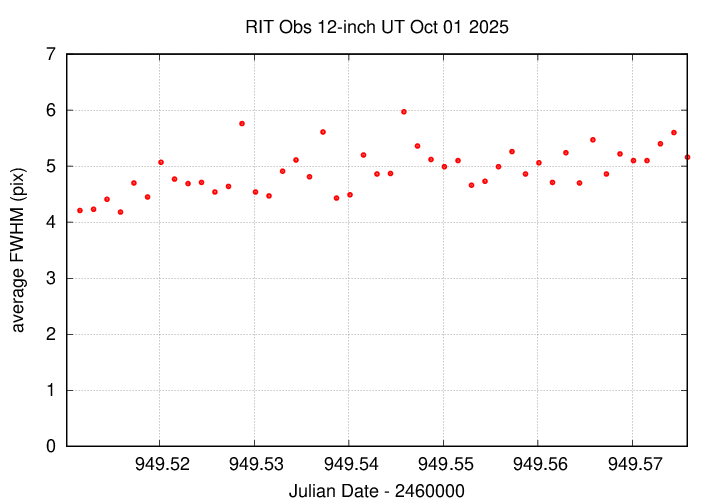
The graph below shows changes in the photometric zeropoint of an ensemble solution of the instrumental magnitudes over the course of the run. Again, no evidence for clouds.
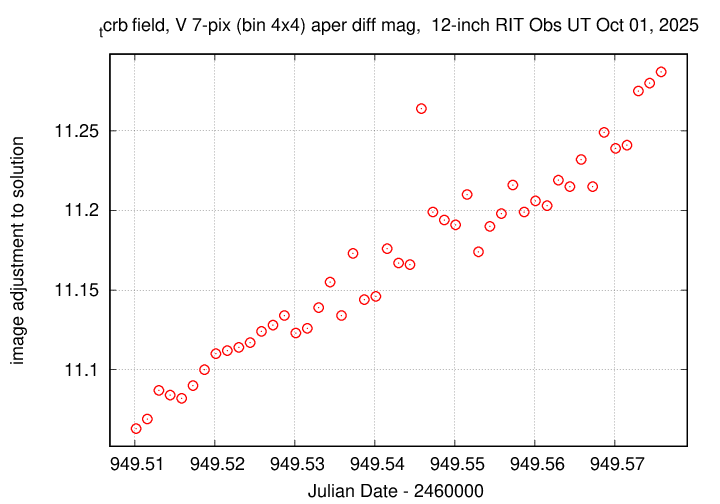
Using aperture photometry with a radius of 7 pixels in V filter (binned 4x4, each pixel is 1.036 arcsec, so a radius of 7.3 arcsec), and 7 pixels in B filter (binned 4x4, each pixel is 1.036 arcsec, so a radius of 7.3 arcsec), I measured the instrumental magnitudes of a number of reference stars and the target. Following the procedures outlined by Kent Honeycutt's article on inhomogeneous ensemble photometry, I used all stars available in each image to define a reference frame, and measured each star against this frame.
Sigma-vs-mag plots show that the floor in V-band was about 0.006 mag in V, nice; it was 0.006 in B.
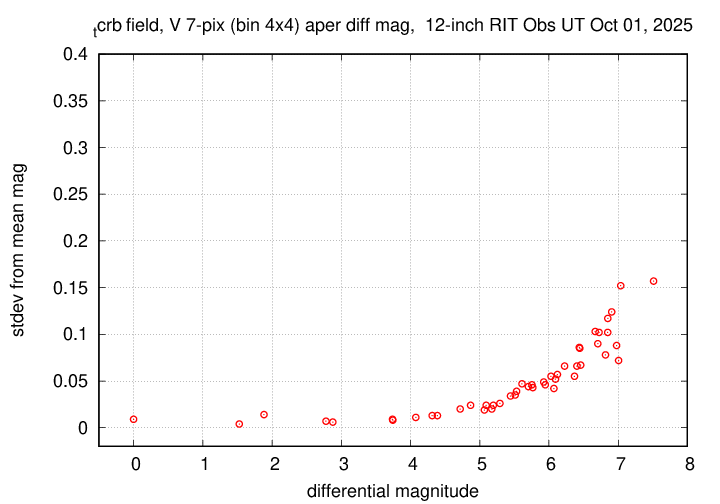
The measurements show that the target is still in quiescent phase.
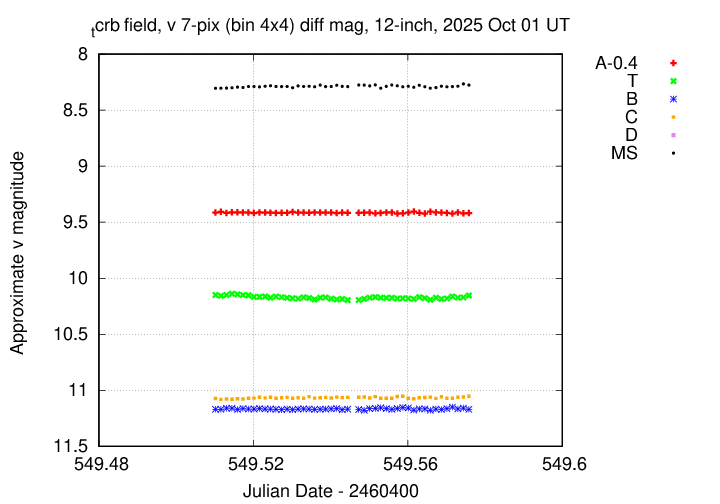
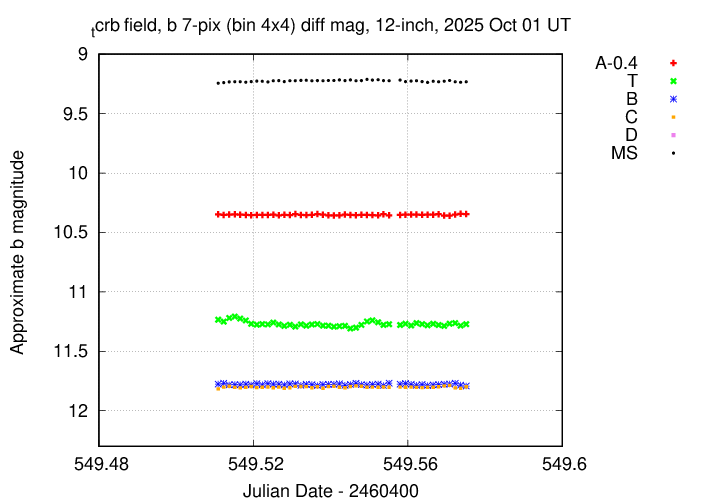
I've submitted these measurements to the AAVSO.
I pointed the telescope to a rich starfield, near gamma Aql. I took a short exposure with the main camera and a set of 5 "long" (10-second) images with the autoguider. I acquired some flatfield images with the autoguider, too, so that I could clean up the autoguider images and co-add them.
After an hour or so of fiddling around, I was able to recognize the pattern of stars in the autoguider field and compare its position to that of the main camera's field. The chart below shows the results:
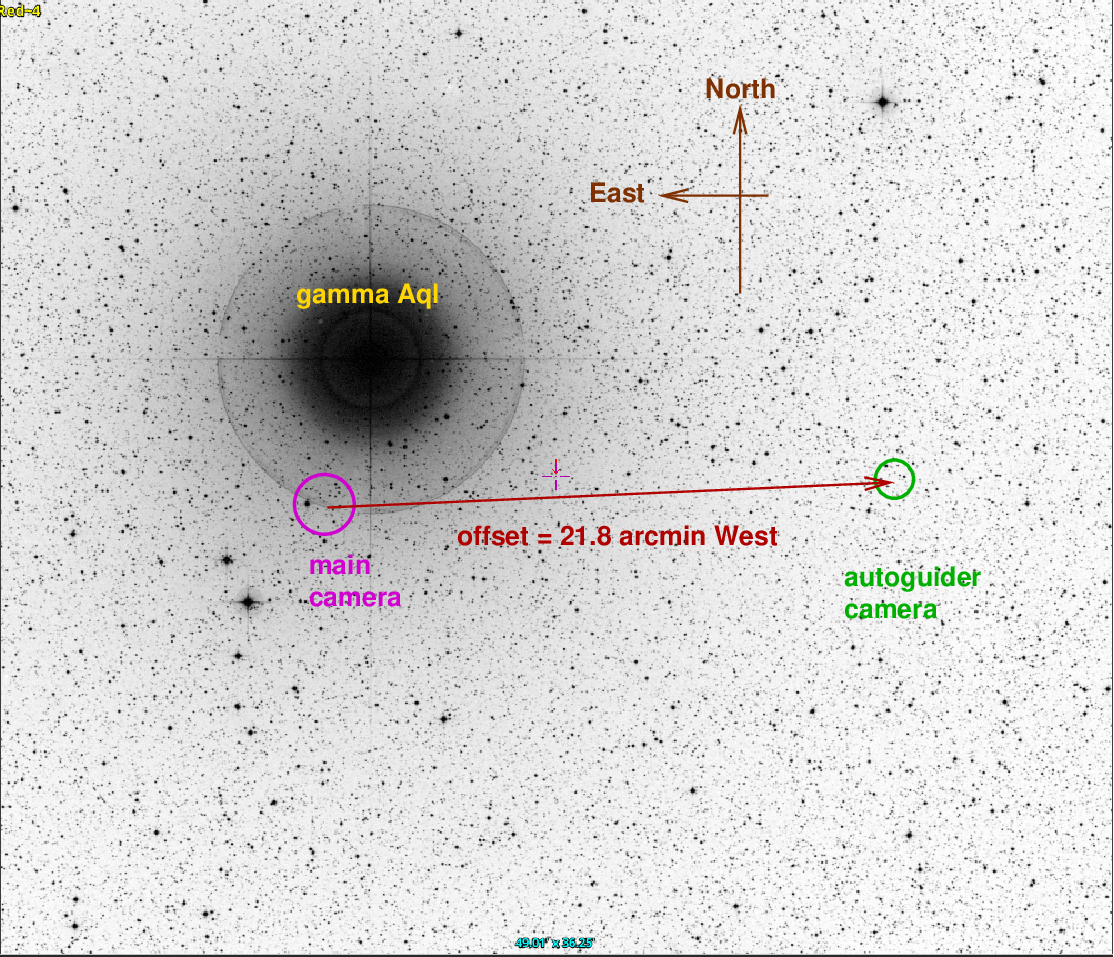
I am guessing that I mounted the camera at a slight angle to the perfect orientation, so that the (row, col) pixels on the cameras don't quite line up perfectly with (North, East) on the sky. That's why the line joining the center of the main camera (magenta) to the center of the autoguider (green) is slightly tilted.